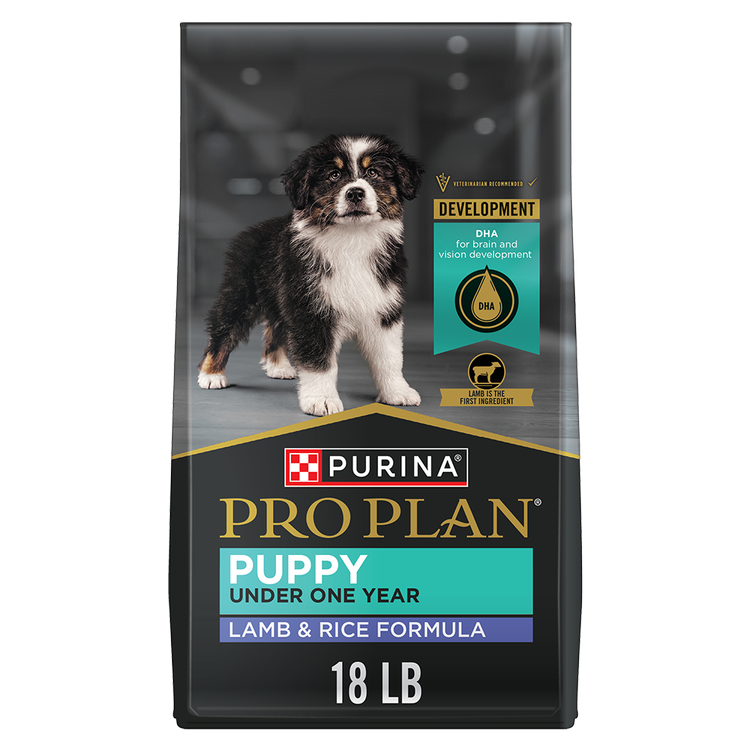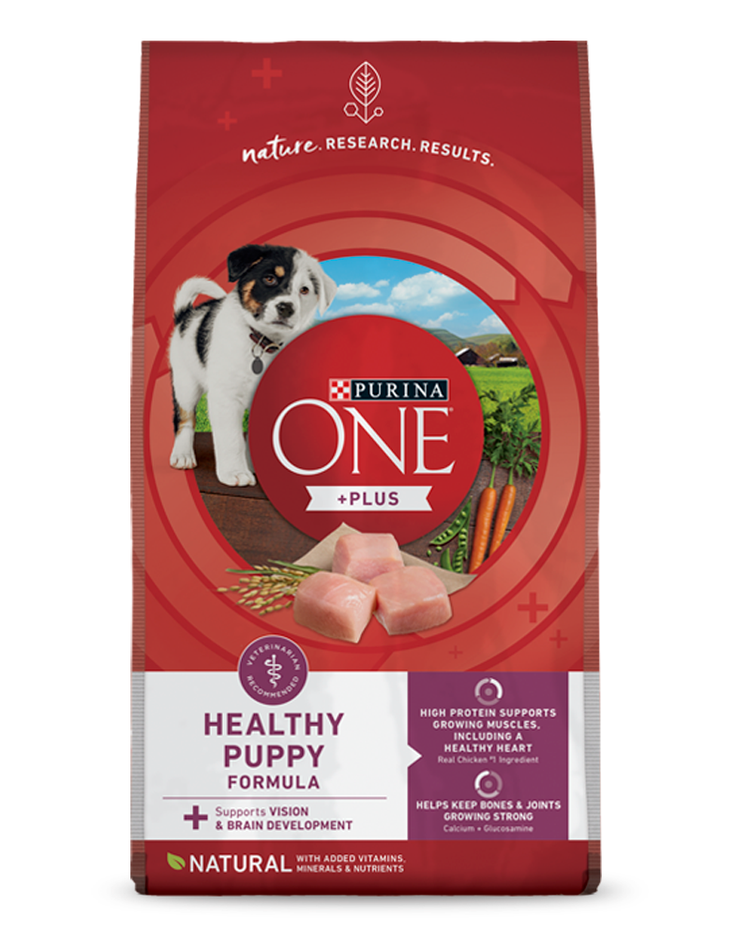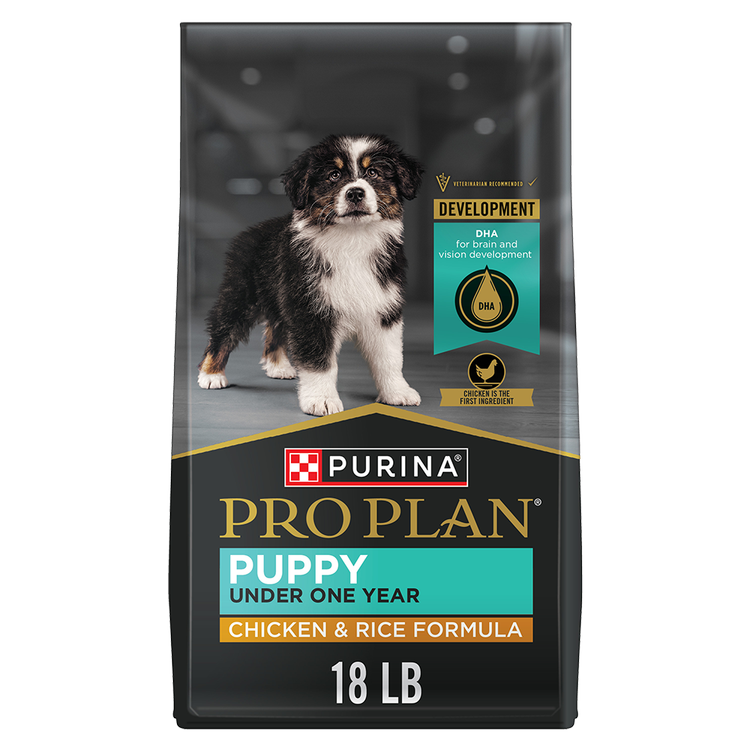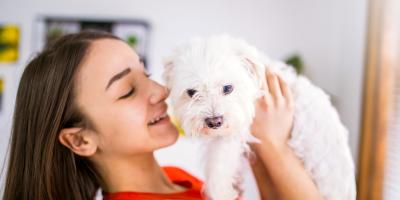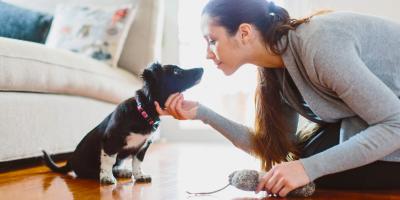How Much Exercise Does a Puppy Need?


Trying to determine how much exercise a puppy needs may seem difficult. With all their running, pouncing and jumping, young canines can appear to have an insatiable hunger for activity (not to mention puppy food).
Despite their high energy, there are some basic guidelines you can follow to ensure your puppy gets an appropriate amount of exercise and play. Here’s what you should know.
How Much Exercise Should a Puppy Get?
Whether your puppy is a big Great Dane or a teeny-tiny Yorkshire Terrier, they need exercise every day. Physical activity has important physical and mental benefits and can help your pet bond with you.
Your veterinarian can offer advice based on factors like breed and overall health, but the right level of activity will depend on your individual pet.
A good rule of thumb is to start with short periods of exercise, such as 5 to 10-minute intervals, 6 times a day. This helps prevent overworking their growing bones and joints and gives them opportunities to rest. If your dog seems excessively tired or struggles to keep up, reduce their activity.
Increase the time, speed and distance of exercise as your puppy gets older.
What Kind of Exercise Is Good for a Puppy?
There are a variety of activities that can harness the perks of exercise.
In addition to aiding in their development, playing with a puppy is a good way to burn energy. Games like fetch and tug-of-war allow them to use their bodies and minds in different ways.
Walking your puppy is also a simple form of exercise (you can begin leash-training around four to six weeks of age). Walking outside accomplishes a few things your puppy needs: Movement, exploration, practice with commands, and knowing when and where to potty.
For some activities, it’s better to wait for your puppy to be older. For example, going up stairs can put strain on the hips and joints of growing puppies, so talk with your veterinarian about the right time to incorporate this activity.
It’s good to change up the environment whenever possible. Rather than always walking them on the sidewalk, try a stroll along a dirt or sandy path. (These soft surfaces are especially important as your dog’s pads toughen.)
Don’t forget, on a warm day, swimming can be a fun and active new learning experience as well.
How Long Should You Walk a Puppy?
Again, you don’t want to push your puppy past what they can handle. When it comes to walking young canines, aim for five minutes for each month of age, twice a day. For example, a 6-month-old puppy may get around 30 minutes of walking, 2 times per day.
Remember to include your walks when calculating your pet’s daily exercise time.
Puppies know when they want to play, and they will let you know. Allow them to expend their energy in an age-appropriate manner. Also give your puppy the option to stop playtime when they want.
Puppy Exercise Guidelines
As you explore different kinds of exercise for your puppy, here are some important tips to keep in mind.
- Make exercise part of your puppy’s daily schedule.
- Sign up for an agility or obedience class together. Besides learning something new, your puppy will enjoy playing with other puppies.
- Keep a variety of toys on hand, spanning size, shape and sound to encourage different kinds of engagement.
- Treadmills are great for exercising your puppy when you can’t get them outside. Make sure to start slow and train them to walk calmly in a fun, positive manner, and always supervise them.
- Consider their present physical condition. Puppies should not be stressing their growing bones, joints and muscles through excessive jumping or strenuous exercise.
- Go slow. If you have not exercised your puppy regularly, don't jump into a rigorous exercise program.
- Place a reflective collar on your puppy, use a bright leash and wear white or light-colored clothing so the two of you can be seen if exercising at night.
- Avoid physical activity immediately before or after a meal; a full stomach may cause digestive upsets.
- Check your canine’s feet for burrs, grass, thorns, rocks or ice and snow, all of which should be removed immediately. Important: Check carefully for ticks after exercising outdoors.
- Obey local laws about using a leash and always promptly clean up after your puppy.
- Give your puppy access to water before and after exercise.
- Don’t exercise in extreme weather. Just because they may be willing to jog with you in 90-degree heat doesn't mean it is safe to do so.
If you have other questions about how much exercise your puppy needs, you can always ask your veterinarian.
Our pet experts also provide helpful tips for activities and health topics on our Pet Expertise page.

Be Rewarded for Your Purina Purchases
Earn and redeem points for Purina products with myPurina app.

